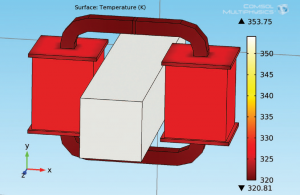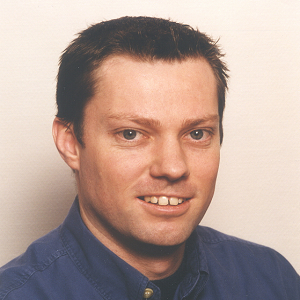
Transformers were first commercially used in the late 1800’s, but they are still being investigated at their fundamental levels. One of the stories from our latest COMSOL News concerns ABB (who themselves have been around since the late 1800’s) and their research into these apparatuses.

The temperature field on the surface of a transformer where the surrounding ambient temperature is 300 K.
Dr. Rolf Disselnkötter works out of the ABB Corporate Research Center in Ladenburgh, Germany. In the User’s Story, he presents a couple of their models and results they have provided.
Basically, the theoretical behavior of a transformer is well understood; the secondary winding should be operated at close to short-circuit conditions so as to decrease current errors, minimize impedance, and evade high voltages at this side. But deviations are unavoidable in the real world, and the team’s analyses give insight into how design parameters and external factors affect performance.
In particular, they are investigating the multiphysics of transformers, particularly with respect to how heat transfer influences the nonlinear magnetic properties of them. This wasn’t trivial as the time-scales between the electromagnetic and heat transfer models was so large. But the ability to set up solver schemes in COMSOL made this easy, as they could solve for a transient analysis of the electromagnetic model for a few current periods to obtain the time-averaged local power loss density, which could then be used as an input for the thermal model to obtain a temperature field, which was then used as an input in a subsequent electromagnetic transient analysis. Further, they have used the predefined circuitry components provided with COMSOL to simulate the transformers as part of the larger picture – the environment to which they are operating within.
I think anyone simulating transformers and other similar components would find this a very interesting article, you can read it here.




Comments (2)
deng xin
October 13, 2012This example is perfect! But if I want to read the whole paper, then what should I do?
Fanny Griesmer
October 15, 2012 COMSOL EmployeeHappy to hear you like the example. You may find the article in COMSOL News: http://www.comsol.com/comsolnews/